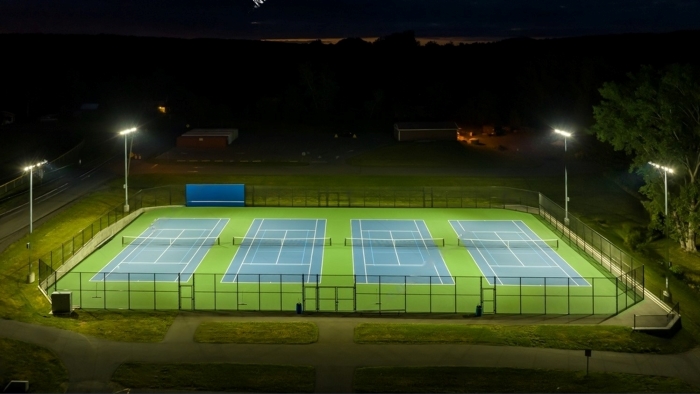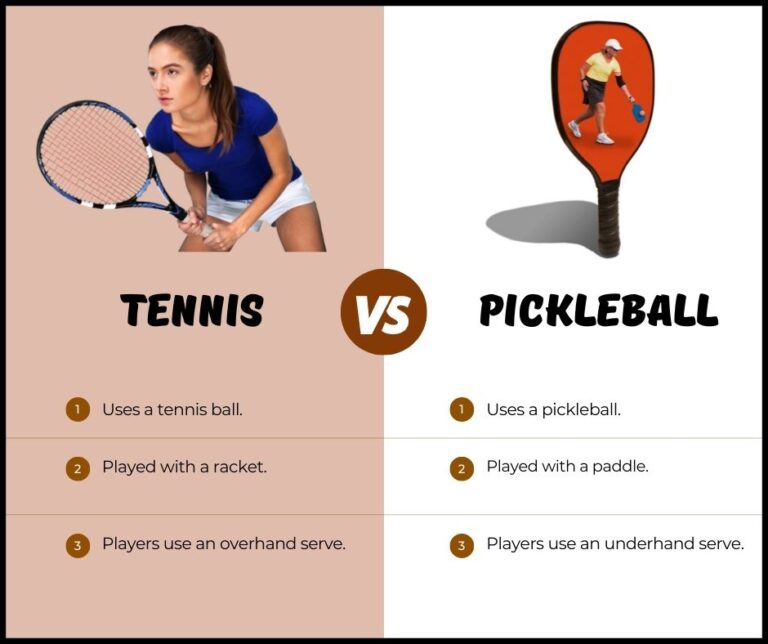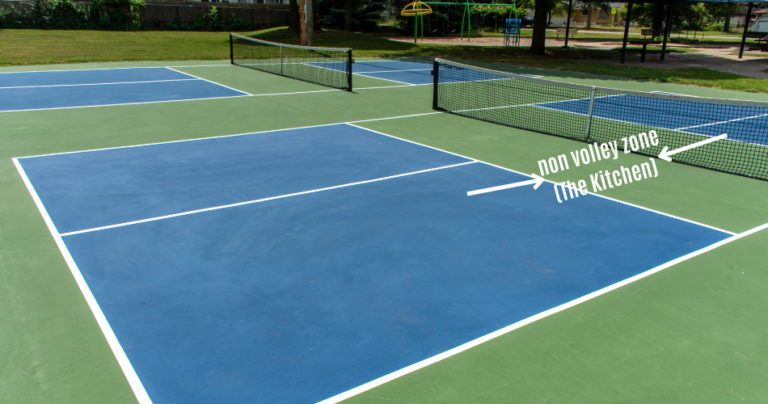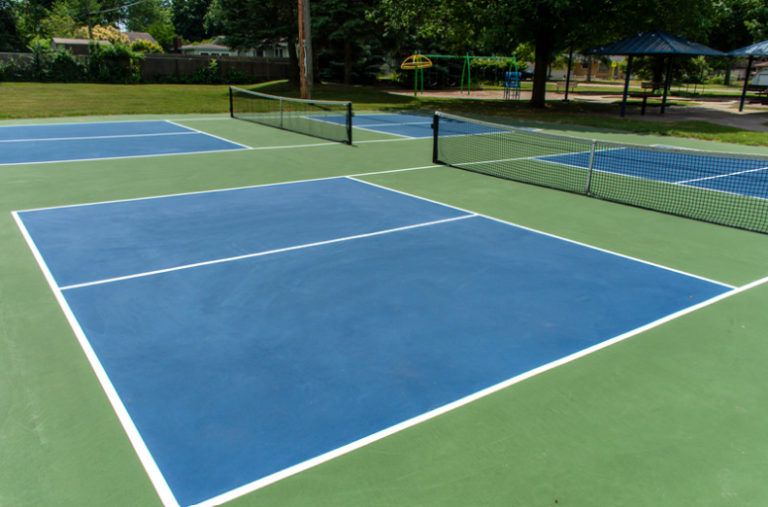Pickleball Ball Size: Official Dimensions and Specifications for a Fun and Fair Game
Pickleball Ball Size: A Comprehensive Guide
The official size of a pickleball ball, as regulated by the USAPA and IFP, has a diameter of 2.874-2.972 inches (7.29-7.54 cm) and a weight of 0.78-0.935 ounces (22.1-26.5 grams). Larger, heavier balls are typically used for outdoor play, while smaller, lighter balls are preferred indoors. Ball size affects the speed and control of the game, with larger balls being faster and smaller balls allowing for more precision. Choosing the right pickleball ball size depends on your skill level, playing environment, and personal preference.
Key Takeaways
- Pickleball ball size is regulated by the International Pickleball Federation (IPF) and USA Pickleball Association (USAPA).
- Regulation pickleball balls have a diameter of 2.874-2.972 inches (7.29-7.54 cm), a circumference of 9.0-9.25 inches (22.86-23.50 cm), and weigh 0.78-0.935 ounces (22.1-26.5 grams).
- Polypropylene (PP) balls are harder, faster, and better suited for outdoor play, while polyethylene (PE) balls are softer, slower, and ideal for indoor play.
- Ball size affects gameplay, with larger balls being faster and requiring quicker reflexes, and smaller balls being slower and allowing for more control and precision.
- Choose the right pickleball ball size based on your skill level, playing environment, and personal preference.
- Proper storage and regular replacement of pickleball balls can help maintain their performance and enhance your playing experience.
Remember, the most important thing is to have fun and enjoy the game of pickleball, regardless of the ball size you choose!
Official Pickleball Ball Size Regulations
First things first, let’s talk about the big guns in the pickleball world – the International Pickleball Federation (IPF) and the USA Pickleball Association (USAPA). These organizations are the rule-makers and regulation-enforcers of the sport, and they have some pretty specific guidelines when it comes to pickleball ball size.
Diameter:
According to the IPF and USAPA, a regulation pickleball should have a diameter between 2.874 to 2.972 inches (7.29 to 7.54 cm). That’s about the size of a generous cookie or a small doughnut hole. The allowed tolerance range for diameter variations is pretty slim, so you can rest assured that all approved balls are fairly consistent in size.
| Pickleball Ball Size | Diameter Range |
|---|---|
| Regulation Size | 2.874 – 2.972 inches (7.29 – 7.54 cm) |
Circumference:
Now, let’s talk about the circumference – the distance around the widest part of the ball. The IPF and USAPA state that a pickleball should have a circumference between 9.0 – 9.25 inches (22.86 – 23.50 cm). That’s about the length of a standard ruler or the width of a typical doorway.
| Pickleball Ball Size | Circumference Range |
|---|---|
| Regulation Size | 9.0 – 9.25 inches (22.86 – 23.50 cm) |
Weight:
Moving on to weight, the IPF and USAPA have set the standard range between 0.78 to 0.935 ounces (22.1 to 26.5 grams). To put that into perspective, it’s about the weight of six quarters or a small handful of paperclips. The weight of the ball plays a crucial role in how it behaves during gameplay, but we’ll get to that later.
| Pickleball Ball Size | Weight Range |
|---|---|
| Regulation Size | 0.78 – 0.935 ounces (22.1 – 26.5 grams) |
It’s important to note that these regulations apply to both indoor and outdoor pickleball balls. However, there are some slight differences in the materials and construction of these balls, which we’ll cover in the next section.
Materials and Construction of Pickleball Balls

Now that we’ve covered the size regulations, let’s talk about what these balls are actually made of. There are two main types of pickleball balls out there:
Polypropylene (PP) balls:
These bad boys are the tough cookies of the pickleball world. They’re harder, faster, and designed for outdoor play. PP balls are known for their durability and ability to withstand windy conditions without getting blown off course. If you’re an outdoor pickleball warrior, these are probably your go-to balls.
Characteristics of PP balls:
- Harder surface
- Faster speed
- Designed for outdoor play
- Durable and wind-resistant
Get your budget game on point! Discover the cost of building a pickleball court today.
Polyethylene (PE) balls:
On the other hand, we have the softer, slower, and more control-oriented PE balls. These are the balls you’ll typically find in indoor pickleball settings. PE balls offer better grip and a more forgiving bounce, making them ideal for players who prioritize precision over power.
Characteristics of PE balls:
- Softer surface
- Slower speed
- Designed for indoor play
- Better grip and control
It’s worth mentioning that some manufacturers also produce hybrid balls that combine the best qualities of both PP and PE materials. These balls aim to provide a balance between speed, control, and durability, making them suitable for both indoor and outdoor play.
How Pickleball Ball Size Affects Gameplay
Alright, now that we’ve covered the nitty-gritty details of pickleball ball size and materials, let’s talk about how these factors influence the way the game is played.
Larger balls (outdoor):
When you’re playing with those beefy outdoor PP balls, you’ll notice that they tend to travel faster through the air due to their reduced air resistance. This means you’ll need to have quicker reflexes and lightning-fast reaction times to keep up with the pace of the game. It’s like trying to catch a greased-up pig at a county fair – challenging, but so satisfying when you succeed!
Impact of larger balls on gameplay:
- Faster ball speed
- Reduced air resistance
- Requires quicker reflexes and reaction times
- Suitable for outdoor play with more space
Smaller balls (indoor):
On the flip side, those smaller indoor PE balls are like the slow and steady tortoises of the pickleball world. They travel at a more leisurely pace, giving you more time to set up your shots and control the ball’s placement. This makes them perfect for smaller court spaces where precision is key.
Impact of smaller balls on gameplay:
- Slower ball speed
- More time to set up shots
- Better control and precision
- Ideal for indoor courts with limited space
But wait, there’s more! Pickleball ball size can also impact different playing styles:
Aggressive players:
If you’re the type of player who loves to smash the ball with the force of a thousand suns, you might prefer those larger, faster outdoor balls. They’ll give you the power and speed you crave to dominate the court.
Defensive players:
Meanwhile, if you’re more of a strategic, defensive player, you might feel more at home with the smaller, slower indoor balls. They’ll allow you to place your shots with surgical precision and keep your opponents on their toes.
| Playing Style | Preferred Ball Size |
|---|---|
| Aggressive | Larger, faster outdoor balls |
| Defensive | Smaller, slower indoor balls |
Factors Affecting Pickleball Ball Size
Now, you might be thinking, “But wait, aren’t all pickleball balls created equal?” Well, my friend, there are a few factors that can influence the size and performance of your trusty pickleball sidekick:
- Material composition: As we mentioned earlier, the type of plastic used (PP or PE) can affect the ball’s hardness, speed, and overall behavior on the court.
- Indoor vs. outdoor play: The playing environment plays a huge role in determining the ideal pickleball ball size. Outdoor balls are typically larger and heavier to combat wind resistance, while indoor balls are smaller and lighter for better control in confined spaces.
- Temperature and humidity: Believe it or not, the weather can also impact your ball’s performance. High temperatures can cause the ball to expand slightly, while humidity can affect its bounce and grip.
Factors affecting pickleball ball size:
- Material composition (PP or PE)
- Indoor vs. outdoor play
- Temperature and humidity
How to Measure Pickleball Ball Size
Alright, let’s say you’re a stickler for the rules and want to make sure your pickleball is regulation size. Here’s how you can measure it like a pro:
- Tools needed: Grab a trusty caliper or ruler – these will be your weapons of choice for ball measurement.
- Step-by-step measuring process:
- For diameter, use the caliper to measure the widest part of the ball.
- For circumference, wrap a flexible measuring tape around the ball’s widest point.
- And for weight, pop that ball on a kitchen scale or a postal scale.
- Checking for conformity: Compare your measurements to the official USAPA and IPF standards we discussed earlier. If your ball falls within the specified ranges, congratulations! You’ve got a regulation-sized pickleball on your hands.
Choosing the Right Pickleball Ball Size
Now that you’re armed with all this knowledge about pickleball ball size, you might be wondering how to choose the perfect ball for your needs. Here are a few factors to consider:
- Skill level: If you’re a beginner, you might find it easier to start with a slightly larger, slower ball until you get the hang of the game. As you progress, you can gradually transition to smaller, faster balls that require more precision and control.
- Playing environment: As we’ve mentioned, outdoor courts call for larger, heavier balls, while indoor courts are better suited for smaller, lighter balls.
- Personal preference: Ultimately, the best pickleball ball size for you is the one that feels most comfortable and natural in your hand. Don’t be afraid to experiment with different sizes and materials until you find your perfect match.
When it comes to specific recommendations, here’s what I suggest:
Outdoor courts:
Go for regulation-sized, heavier balls in the range of 0.78 to 0.935 ounces (22.1 to 26.5 grams). These will give you better wind resistance and help you power through those outdoor elements.
Recommended pickleball ball size for outdoor courts:
- Regulation size
- Weight: 0.78 to 0.935 ounces (22.1 to 26.5 grams)
Indoor courts:
Opt for regulation-sized, lighter balls around 0.78 ounces (22.1 grams). These will provide more control and finesse for those tight, indoor rallies.
Recommended pickleball ball size for indoor courts:
- Regulation size
- Weight: around 0.78 ounces (22.1 grams)
And don’t forget to check out some of the most popular pickleball ball brands out there, like Dura, Onix, and Franklin. They offer a wide range of sizes and materials to suit every player’s needs. Get in the game – check out the court dimensions!
- Dura
- Onix
- Franklin
Additional Tips for Pickleball Ball Usage
Before we wrap up this epic journey into the world of pickleball ball size, let me leave you with a couple of bonus tips:
- Storage: To keep your pickleball balls in tip-top shape, store them in a cool, dry place away from direct sunlight. This will help maintain their shape, bounce, and overall performance.
- Replacement: Don’t be afraid to replace your balls when they start to show signs of wear and tear. A fresh ball can make all the difference in your gameplay, so treat yourself to a new set every once in a while.
Tips for pickleball ball usage:
- Store in a cool, dry place away from direct sunlight
- Replace balls when they show signs of wear and tear
Frequently Asked Questions about Pickleball Ball Size
I know you probably have a million questions buzzing around in your head right now, so let’s tackle some of the most common ones:
- Are all pickleball balls the same size? While there are official size regulations, there can be slight variations between brands and materials. However, all approved balls will fall within the specified ranges set by the USAPA and IPF.
- Can I use a smaller or larger ball for practice? Absolutely! Using different sized balls can actually help you refine your skills and adapt to various playing conditions. Just remember to switch back to regulation size for official games and tournaments.
- How often should I replace my pickleball balls? It depends on how frequently you play and how well you maintain your balls. On average, a heavily used ball should be replaced every couple of weeks to ensure optimal performance.
- Is there a standard pickleball ball color? While there’s no official color regulation, most pickleball balls come in bright, eye-catching colors like neon green, yellow, or orange. This helps with visibility on the court.
- Where can I buy pickleball balls? You can find pickleball balls at most sporting goods stores, online retailers, and specialty pickleball shops. Some popular online options include Amazon, Pickleball Central, and Dick’s Sporting Goods.
Explore the best places to play pickleball in your area
Conclusion
Phew, that was quite the journey! We’ve covered everything from official pickleball ball size regulations to the impact of size on gameplay, factors affecting ball performance, and even some handy tips for choosing and maintaining your balls.
Remember, the key to finding the perfect pickleball ball size is to consider your skill level, playing environment, and personal preferences. Don’t be afraid to experiment with different sizes and materials until you find the one that feels like an extension of your hand.
And most importantly, have fun out there! Pickleball is all about enjoying the game, connecting with other players, and maybe even engaging in some friendly trash talk (just kidding, keep it classy!).
So grab your paddle, find your perfect ball, and get ready to dive into the wonderful world of pickleball. Trust me, once you start, you’ll never want to stop. Happy pickling, my friends!






